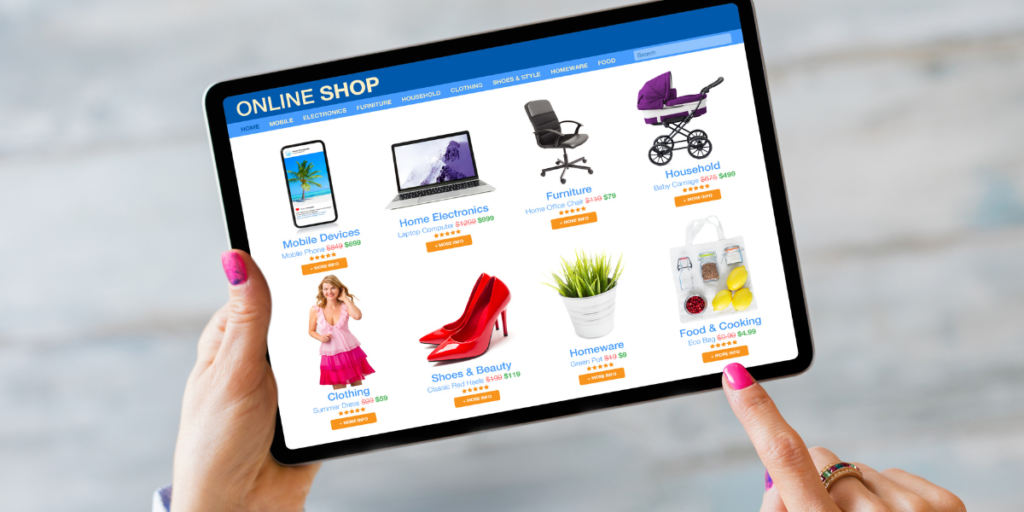what is Shopify?
Shopify is an e-commerce platform that allows individuals and businesses to create an online store to sell their products. Shopify, in essence, is an all-in-one e-commerce platform that empowers anyone to build, manage, and grow their online store. It acts as a comprehensive toolbox, providing everything you need to:
1. Create your online store:
- Choose from a variety of pre-designed themes or customize your own.
- Add and manage your product listings with detailed descriptions, images, and pricing.
- Set up payment gateways to accept secure online transactions.
- Configure shipping options and integrate with shipping carriers.
2. Manage your business:
- Track orders and inventory in real time.
- Process orders and manage customer relationships.
- Generate reports and analytics to understand your store’s performance.
- Utilize built-in marketing tools like email marketing and social media integrations.
3. Grow your business:
- Access a vast app store with tools for everything from SEO optimization to customer loyalty programs.
- Sell on multiple channels beyond your website, including social media and online marketplaces.
- Gain access to educational resources and support to help you succeed.
Key benefits of using Shopify:
- Easy to use: No coding required, suitable for beginners and experienced entrepreneurs alike.
- Scalable: Can handle small and large businesses alike, adapting to your growth.
- Feature-rich: Offers a wide range of built-in tools and access to even more through the app store.
- Reliable and secure: Provides a secure platform for your store and customer data.
If you’re considering starting an online store, Shopify is worth exploring. They offer a free trial so you can try it out before committing, and their vast community and resources make it a great choice for anyone looking to succeed in the e-commerce world.
Essential Features:
- Create and customize your online store: Choose from pre-designed themes or customize your own.
- Add and manage products: Unlimited products with descriptions, images, pricing, and inventory tracking.
- Process orders and payments: Secure checkout with multiple payment gateways like PayPal and Stripe.
- Manage customers: View customer information, track orders, and handle returns.
- Shipping and fulfillment: Set up shipping rates and integrate with major carriers.
- Website analytics: Track website traffic, sales, and customer behavior.
- Marketing tools: Basic email marketing, discount codes, and social media integrations.
- 24/7 support: Access to online resources and live chat support.
Additional Features by Plan:
- Basic Shopify: Up to 2 staff accounts, 2% transaction fees, limited reporting.
- Shopify: Up to 5 staff accounts, 1% transaction fees, abandoned cart recovery, gift cards.
- Advanced Shopify: Up to 15 staff accounts, 0.5% transaction fees, advanced reporting, and calculated shipping rates.
- Shopify Plus: Custom pricing for enterprise-level features, high-volume stores, and API access.
Beyond the core features, Shopify offers a vast App Store:
- Thousands of apps to extend your store’s functionality, from SEO optimization to loyalty programs.
- Paid and free apps are available, catering to specific needs and budgets.
Cons:
- Pricing: While Shopify offers several plans, higher tiers can be expensive for some businesses, especially beginners.
- Transaction Fees: Basic Shopify and Shopify plans have transaction fees, which can eat into your profits on high-volume sales.
- Limited Design Customization: While themes offer flexibility, advanced customization might require coding knowledge or paid theme development.
- Reliance on Apps: Certain functionalities require paid apps, potentially increasing your monthly costs.
- Competition in the App Store: Finding the right app amidst thousands can be overwhelming, and app quality can vary.
- Learning Curve: While user-friendly, mastering all features and advanced customization might take time and effort.
Overall, Shopify provides a comprehensive platform to build and run your online store. The specific features included depend on your chosen plan, but you can always scale up and add more functionality as your business grows.
Here are some additional things to consider:
- Free trial available: Try Shopify for 14 days before committing to a plan.
- Transaction fees: Basic Shopify and Shopify plans have transaction fees, while Advanced Shopify plans do not.
- Payment gateways: Certain payment gateways may have additional fees.
Shopify also offers various features such as inventory management, payment processing, shipping, and order tracking. You can integrate a variety of payment gateways and shipping providers, and choose from a variety of apps to enhance the functionality of your store.
How does Shopify work?
To start using Shopify, you need to sign up for an account, choose a pricing plan, and set up your store by adding products, customizing the design, and configuring the settings. Once your store is set up, you can start promoting it to attract customers and generate sales
7 Steps to Start Using Shopify and Launch Your Online Store
- Sign Up & Free Trial: Head to Shopify’s website and create your free 14-day trial account. No credit card is required!
- Choose Your Plan: Explore the different Shopify plans (Basic, Shopify, Advanced Shopify, and Shopify Plus) and pick the one that best suits your current needs and budget. You can always upgrade later as your store grows.
- Design Your Store: Select a pre-designed theme from Shopify’s extensive library or customize your unique look using the drag-and-drop interface. Don’t worry about coding!
- Add Products & Inventory: Fill your virtual shelves! Add product descriptions, images, and pricing, and manage your inventory levels within the intuitive Shopify dashboard.
- Set Up Payment & Shipping: Integrate secure payment gateways like PayPal or Stripe to accept online payments. Configure shipping rates and connect with preferred carriers for smooth order fulfillment.
- Connect Your Domain Name: Choose a catchy domain name and connect it to your Shopify store, making it accessible to the world. You can purchase a domain directly through Shopify or use a third-party registrar.
- Launch & Market Your Store: Publish your beautiful online store and spread the word! Utilize Shopify’s built-in marketing tools like email marketing, social media integrations, and discount codes to attract customers and start driving sales.
Bonus Tip:
- Don’t rush into a plan: Explore the features of each plan before committing.
- Personalize your store: Make it yours with your brand identity and unique voice.
- Optimize for mobile: Ensure your store looks and functions flawlessly on all devices.
- Utilize apps: Extend your store’s functionality with countless apps from the Shopify App Store.
- Seek help and learn Leverage Shopify’s extensive resources, tutorials, and community for ongoing support and growth.
Remember, starting an online store is an exciting journey! Take your time, be creative, and don’t hesitate to reach out for help if needed. Shopify is there to support you every step of the way.
The beauty of Shopify is that you can sell almost anything on it! There are very few limitations, making it a fantastic platform for a wide range of businesses and ideas. Here’s a breakdown of your options:
Physical Products:
- Handmade goods: Crafts, artwork, jewelry, clothing, furniture, etc.
- Consumer goods: Electronics, apparel, homeware, toys, sporting goods, etc.
- Food and beverages: Coffee, tea, snacks, prepared meals, subscriptions, etc.
- Health and beauty products: Cosmetics, skincare, supplements, wellness items, etc.
- Anything you can source or manufacture!: From pet accessories to gardening tools, the possibilities are endless.
Digital Products:
- E-books, printables, and online courses: Share your knowledge and expertise.
- Software and app downloads: Develop and sell digital tools or solutions.
- Music, videos, and other media: Showcase your creative talent.
- Templates and design assets: Offer resources for graphic designers and web developers.
- Memberships and subscriptions: Create exclusive content or communities for paying members.
Services:
- Consulting and coaching: Offer your expertise to clients online.
- Design and creative services: Logo design, web design, branding, etc.
- Digital marketing services: SEO, social media management, content creation, etc.
- Repair and maintenance services: Offer online booking and service scheduling.
- Anything you can provide remotely: From fitness coaching to virtual assistants, the possibilities are vast.
Additional Ideas:
- Dropshipping: Partner with suppliers to sell products without managing inventory.
- Print-on-demand: Design custom t-shirts, mugs, phone cases, etc.
- Subscription boxes: Curate and deliver themed boxes regularly to subscribers.
- Wholesale and B2B sales: Use Shopify to sell to other businesses.
- Get creative! Combine different models or come up with unique offerings.
Remember:
- Research your target audience and market demand before investing in specific products.
- Ensure your products comply with Shopify’s terms of service and relevant regulations.
- Start small and scale gradually as your business grows.
With its flexibility and vast resources, Shopify empowers you to turn your product or service idea into a thriving online business. So, unleash your creativity, explore the possibilities, and start selling what you love!
Where Can I Sell Using Shopify?
The beauty of Shopify is its multi-channel selling capabilities, meaning you’re not restricted to just your online store! Here’s where you can sell using Shopify:
Your Own Shopify Store:
- Direct website: This is your primary storefront, accessible through your custom domain name.
- Mobile app: Shopify offers a dedicated mobile app for your store, providing seamless shopping on the go.
Online Marketplaces:
- Connect with major marketplaces: Sell on popular platforms like Amazon (US only), Walmart (US only), eBay, and Etsy.
- Reach wider audiences: Tap into the established customer base of these marketplaces and expand your reach.
- Simplified management: Manage listings, inventory, and orders for all marketplaces from within your Shopify dashboard.
Social Media Platforms:
- Sell directly on platforms like Facebook, Instagram, and TikTok: Reach your social media followers directly and convert them into buyers.
- Shoppable posts and stories: Tag products in your social media content and make them instantly purchasable.
- Social commerce integration: Shopify seamlessly integrates with various social media platforms for a smooth selling experience.
Physical Stores:
- Shopify POS: Use Shopify’s Point-of-Sale system to manage in-person sales at your brick-and-mortar store.
- Unified inventory and sales: Track inventory and sales across both online and offline channels in real time.
- Omnichannel experience: Offer a seamless buying experience for customers who move between online and offline channels.
Additional Options:
- Wholesale channels: Sell your products to other businesses through dedicated wholesale platforms.
- Pop-up shops and events: Utilize temporary physical locations to showcase and sell your products.
- Partnerships and collaborations: Partner with other businesses to cross-promote and reach new audiences.
Ultimately, the best channel for you depends on your target audience, business goals, and resources. Start with your core platform (your Shopify store) and then explore additional channels as your business grows.
Remember: Each channel has its advantages and requirements. Research and compare options before committing, and make sure your resources can support expansion to multiple channels.
Frequently Asked Questions
1. What is Shopify?
Shopify is an e-commerce platform that allows individuals and businesses to create an online store to sell their products. It provides a comprehensive toolbox to build, manage, and grow your online store, including features like website design, product management, order processing, payment processing, and shipping management.
2. How does Shopify work?
To use Shopify, you need to sign up for an account, choose a pricing plan, and set up your store by adding products, customizing the design, and configuring the settings. Once your store is set up, you can start promoting it to attract customers and generate sales.
3. What are the benefits of using Shopify?
Some key benefits of using Shopify include its ease of use, scalability, feature-rich platform, and reliable security. It also offers a vast app store with tools for everything from SEO optimization to customer loyalty programs, as well as educational resources and support to help you succeed.
4. What are the pricing plans for Shopify?
Shopify offers several pricing plans, including Basic Shopify, Shopify, Advanced Shopify, and Shopify Plus. Each plan offers different features and functionality, with pricing ranging from $29/month to custom pricing for enterprise-level features.
5. Can you customize the design of your Shopify store?
Yes, Shopify provides a range of pre-designed themes that you can customize to fit your brand, or you can create your custom design using HTML, CSS, and Liquid. However, advanced customization might require coding knowledge or paid theme development.
6. How does Shopify handle payments and transactions?
Shopify provides secure checkout with multiple payment gateways like PayPal and Stripe, with transaction fees varying depending on your chosen pricing plan. It also allows you to set up tax rates, and shipping rates, and integrate with major carriers for shipping and order tracking.
7. Does Shopify offer customer support?
Yes, Shopify offers 24/7 support through online resources and live chat support, as well as a community forum and educational resources to help you succeed.





